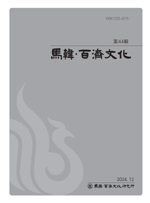- 영문명
- “Visualization of the Sacredness and Auspiciousness”: A Study on the motifs of the Sarira Reliquaries from Baekje Mireuksa Temple
- 발행기관
- 원광대학교 마한백제문화연구소
- 저자명
- 소현숙(Hyun Sook So)
- 간행물 정보
- 『마한백제문화』제45집, 28~50쪽, 전체 23쪽
- 주제분류
- 인문학 > 역사학
- 파일형태
- 발행일자
- 2025.06.30
5,560원
구매일시로부터 72시간 이내에 다운로드 가능합니다.
이 학술논문 정보는 (주)교보문고와 각 발행기관 사이에 저작물 이용 계약이 체결된 것으로, 교보문고를 통해 제공되고 있습니다.

국문 초록
본고는 639년 건립된 백제 미륵사지 서탑 발견 사리용기의 표면에 나타난 장엄의장의 성격과 의의를 살펴본 것이다.
미륵사지 사리용기는 현존하는 한국 고대 사리기 가운데 표면장엄이 가장 먼저 출현한다. 사리용기의 전면을 불교적 도상이나 문양 등으로 장엄하는 것은 6세기 초 수나라 仁壽 연간(601~604)에 건립된 仁壽舍利器에서 본격적으로 출현하므로, 미륵사지 사리용기의 표면장엄은 수나라의 영향을 받은 것으로 볼 수 있다. 그럼에도 불구하고 표현된 내용은 중국의 그것과 매우 다르다. 수대 사리용기에는 주로 석가모니의 열반과 관련된 제재나 불교적 도상 등이 표현되었다. 반면, 미륵사지 사리용기에서는 불교적 인물이나 열반과 관련된 모티프는 전혀 출현하지 않는다. 대신 聯珠文, 蓮花文, 寶珠文, 넝쿨문[蔓草文], 팔메트문, 靈氣文, 魚子文 등, 이른바 ‘文樣’이라고 불리는 제재들로 가득 차 있다.
이와 같은 문양의 구성과 조합은 부여 부소산성 출토 백제 광배의 그것과 매우 유사하다. 불상 광배 문양과의 유사성은 미륵사지 사리용기의 표면장엄이 광배의 그것과 유사한 상징성을 갖고 있었음을 드러내주는 것이다. 광배는 佛身의 神聖性과 그것의 발현인 빛을 구상화한 것이다. 다시 말해 석가모니 부처의 유골[舍利]을 담았던 미륵사 사리용기의 표면장엄은 단순한 장식문양이 아니라 사리가가진 신성성을 드러내는 ‘빛과 氣’를 집약적으로 표현한 것으로 볼 수 있다. 고대 동아시아에서 ‘빛과氣’는 또한 祥瑞를 상징하는 대표적 모티프였다. 그러므로 미륵사지 사리용기의 표면장엄은 ‘신성성과상서’라는 중층적 의미를 가지고 있었다고 볼 수 있다.
영문 초록
This article surveys the characteristic and significance of the surface decoration of the sarira reliquaries excavated at the stone pagoda of Baekje Mireuksa Temple site, built in 639.
The sarira reliquaries of Mireuksa Temple are very important as they are the first to show surface decoration among the existing ancient sarira reliquaries in Korea. Decorations on all sides of the sarira reliquary first appeared in the artifacts made during the reign of the Sui Dynasty in China. Therefore, the surface decorations of the Mireuksa sarira reliquaries can be seen as having been influenced by the Sui Dynasty. However, the motifs that appear on the surface of the reliquaries are very different from those in China. The sarira reliquaries of the Sui Dynasty mainly depicted motifs related to the nirvana of Sakyamuni and Buddhist figures. On the other hand, Buddhist motifs like these do not appear at all in the Mireuksa sarira reliquaries. Instead, they are full of so-called ‘patterns’ such as lotus patterns, pearl patterns, vine patterns, palmette patterns etc.
The composition and combination of these patterns are very similar to those of the Baekje 7th century halo excavated from Buyeo Busosan Fortress. The similarity with the pattern of the Buddha's halo reveals that the surface decoration of the Mireuksa sarira reliquaries had a symbolism similar to that of the halo. The halo is a representation of the sacredness of the Buddha's body and the light that is its manifestation. In other words, the surface decoration of the sarira reliquaries of Mireuksa Temple that contained the relics of the Buddha Sakyamuni is not a simple decorative pattern, but can be seen as an intensive expression of the “light and energy” that reveals the sacredness of the sarira. In ancient East Asia, “light and energy” were also representative motifs symbolizing auspiciousness. Therefore, the surface decoration of the sarira reliquaries at Mireuksa Temple can be seen as having a multi-layered meaning of “sacredness and auspiciousness.”
목차
Ⅰ. 머리말
Ⅱ. 5세기 후반~7세기 전반 중국 사리용기와 표면장엄
Ⅲ. 삼국 및 백제 미륵사지 출토 사리용기와 표면장엄
Ⅳ. 미륵사지 사리용기 표면장엄의 성격과 의미
Ⅴ. 맺음말
참고문헌
키워드
해당간행물 수록 논문
참고문헌
교보eBook 첫 방문을 환영 합니다!

신규가입 혜택 지급이 완료 되었습니다.
바로 사용 가능한 교보e캐시 1,000원 (유효기간 7일)
지금 바로 교보eBook의 다양한 콘텐츠를 이용해 보세요!




